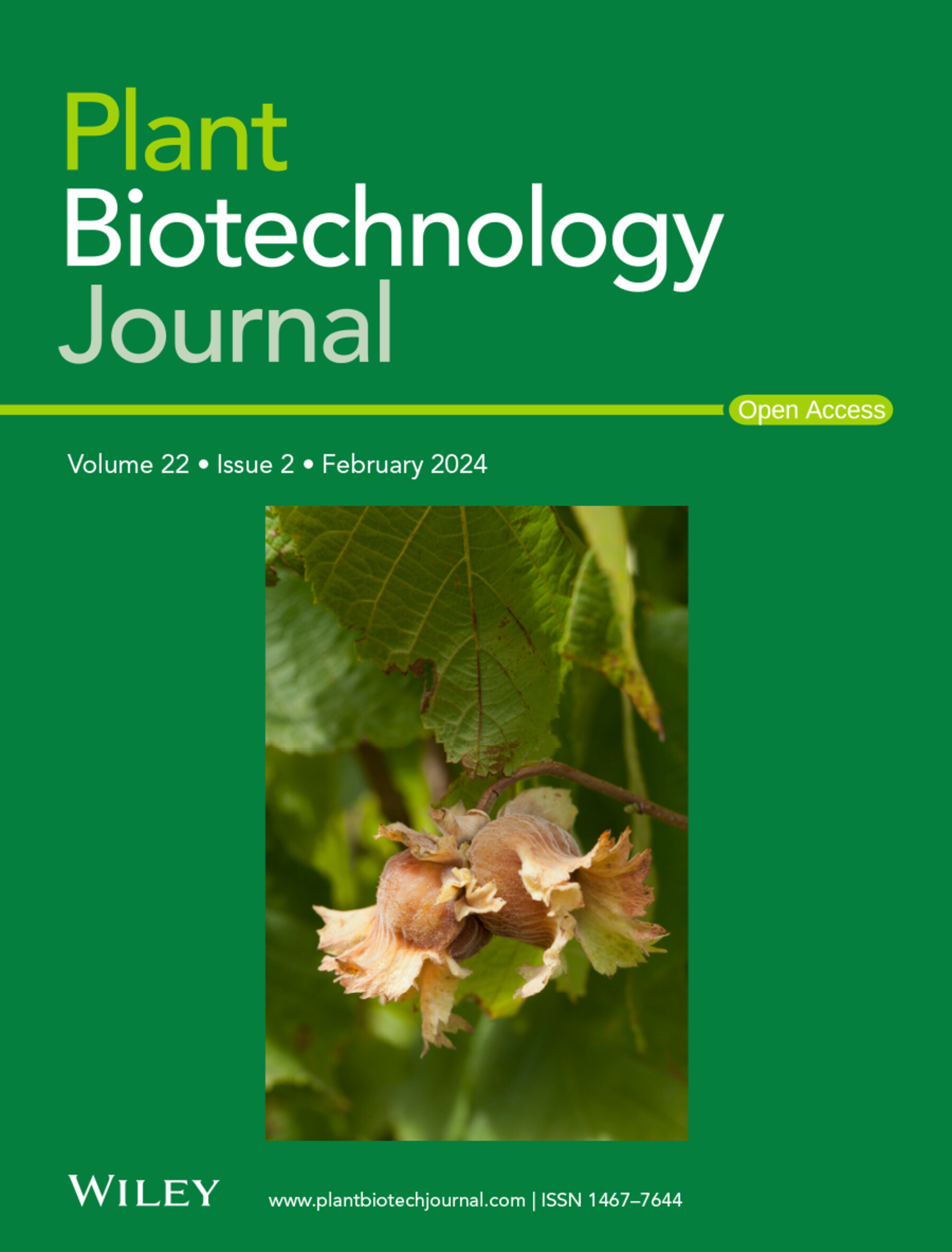基因组编辑抗白叶枯病水稻品种的转基因去除及产量损失评价
IF 10.5
1区 生物学
Q1 BIOTECHNOLOGY & APPLIED MICROBIOLOGY
引用次数: 0
摘要
水稻白叶枯病(BB),由水稻黄单胞菌引起。稻瘟病(Xoo)是造成非洲和亚洲产量损失的主要原因之一。Xoo分泌TAL效应物(TALe),通过结合SWEET启动子的效应结合元件(EBE)诱导宿主SWEET蔗糖单转运体,这可能是Xoo繁殖和毒力所必需的。我们对三个SWEET基因的EBEs进行多重编辑,以防止TALe结合,产生基因组编辑(GE)的水稻大品种(IR64,亚洲的Ciherang - Sub1和非洲的Komboka),这些水稻品种对广泛的Xoo菌株具有抗性。在这里,我们报告了对转基因品系的综合分析,包括在不同施肥制度下多地点、多季节试验田的农艺性能评估,以及转基因品系后代(IR64‐BC1T6、Ciherang‐Sub1‐BC1T5、Komboka‐T3)中外源DNA/转基因的存在/缺失测试。评估了各种策略,包括除草剂耐受性、PCR、DNA凝胶印迹、全基因组测序(WGS)和国家特定生物安全指南规定的特定测试。对不同的WGS技术进行了评估,并用于鉴定可能由体细胞无性系变异和潜在的GE诱导的脱靶突变引起的编辑、单核苷酸多态性(snp)和插入/缺失(indel)的遗传性。提供了亲本系IR64、Ciherang‐Sub1和Komboka的完整基因组参考序列。在田间试验中,GE系没有表现出性能缺陷。总之,结果表明,精选的转基因品种不含外源DNA或转基因片段,满足了与印度和肯尼亚等国家的传统育种品种同等的处理要求。本文章由计算机程序翻译,如有差异,请以英文原文为准。
Removal of Transgenes and Evaluation of Yield Penalties in Genome Edited Bacterial Blight Resistant Rice Varieties
Bacterial blight (BB) of rice, caused by Xanthomonas oryzae oryzae (Xoo), is one of the major drivers of yield losses in Africa and Asia. Xoo secretes TAL‐effectors (TALe) that induce host SWEET sucrose uniporter by binding to the effector binding element (EBE) of SWEET promoters, likely required for Xoo reproduction and virulence. We had multiplex edited the EBEs of three SWEET genes to prevent TALe binding, producing genome‐edited (GE'd) rice mega‐varieties (IR64, Ciherang‐Sub1 for Asia and Komboka for Africa) that were resistant to a wide spectrum of Xoo strains. Here, we report comprehensive analyses of the GE'd lines, including evaluation of agronomic performance in multi‐location multi‐season experimental field plots under different fertilisation regimes and tests for the presence/absence of foreign DNA/transgene in the offspring of GE'd lines (IR64‐BC1T6, Ciherang‐Sub1‐BC1T5, Komboka‐T3). Various strategies were evaluated, including herbicide tolerance, PCR, DNA gel blotting, whole genome sequencing (WGS), and specific tests stipulated by country‐specific biosafety guidelines. Different WGS technologies were evaluated and also used to identify the heritability of the edits, single‐nucleotide polymorphisms (SNPs), and insertions/deletions (indels) that might have resulted from somaclonal variation and potential GE‐induced off‐target mutations. Complete genome reference sequences for the parental lines IR64, Ciherang‐Sub1, and Komboka are provided. In the field experiments, the GE'd lines did not show performance defects. Together, the results indicate that select GE'd lines do not contain foreign DNA or transgene fragments and fulfil the requirements for treatment equivalent to classical breeding lines in countries such as India and Kenya.
求助全文
通过发布文献求助,成功后即可免费获取论文全文。
去求助
来源期刊

Plant Biotechnology Journal
生物-生物工程与应用微生物
CiteScore
20.50
自引率
2.90%
发文量
201
审稿时长
1 months
期刊介绍:
Plant Biotechnology Journal aspires to publish original research and insightful reviews of high impact, authored by prominent researchers in applied plant science. The journal places a special emphasis on molecular plant sciences and their practical applications through plant biotechnology. Our goal is to establish a platform for showcasing significant advances in the field, encompassing curiosity-driven studies with potential applications, strategic research in plant biotechnology, scientific analysis of crucial issues for the beneficial utilization of plant sciences, and assessments of the performance of plant biotechnology products in practical applications.
 求助内容:
求助内容: 应助结果提醒方式:
应助结果提醒方式:


